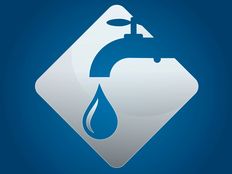
All through the pandemic, U.S. municipal utilities have shown incredible fiscal resilience, prompting many credit rating agencies to reaffirm their positive outlook for this sector as we move into 2022.
This resilience is primarily attributed to a few key factors, such as continued planned rate hikes, deferred maintenance, and high recovery rates, which have sustained throughout COVID-19, contrary to original expectations. These trends have helped U.S. municipal utilities, especially water and sewer, build strong cash balances to address future challenges. However, aging infrastructure and inflationary pressures can present some potential challenges for these utilities.
In this article, we will take a closer look at some key indicators to assess the outlook for many municipal utilities in the United States.
Be sure to check our Municipal Bonds Channel to stay up to date with the latest trends in municipal financing.
Understanding the Key Factors Influencing Municipal Utilities
One key to fiscal resilience for a municipal utility is its operating revenues through local government rate setting, which, beyond meeting operational expenditures, help to build cash reserves for future capital improvements or add to fiscal sustainability. In 2021, S&P global ratings took the following rating actions related to U.S. municipal utilities: “48 upgrades, 29 downgrades, and 16 reversals of negative outlooks assigned early in the pandemic.” These positive trends were primarily attributed to healthy operating margins for these municipal utilities. Let’s look at a few more key factors.
- Federal Policy Shift to Address Aging Infrastructure
A large percentage of American municipal utilities continue to struggle with aging infrastructure and underinvestment in this sector from respective local governments. Most of the water and sewer infrastructure in the U.S is already past its useful life and risks operational failure, which will affect the financial viability of the utility and present significant challenges to the communities it serves. Prior to COVID-19, many of these utilities underwent rate increases and operational studies to address infrastructure challenges, which also helped them to build strong cash balances to take on these challenges.
The recent American Infrastructure Investment and Jobs Act passed in late 2021 presents another positive sign for American utilities to address the aforementioned challenges related to infrastructure. This federal policy shift has allocated $55 billion to drinking water, wastewater, and strong water infrastructure funding.
- Recent Inflationary Pressures
This area has emerged as an important component in addressing ongoing challenges for U.S. municipal utilities, beyond positive trends. The inflationary pressure primarily affects capital improvements that will now have to reconcile with the increased cost of goods and services needed for a particular project, possibly cutting into operational margins. Furthermore, many utilities have not increased their rates during COVID-19, which means operational revenues are the same as prior years; however, utilities now must grapple with inflation. Other challenges paired with inflationary pressures likely to worsen the problem are supply chain disruptions and labor shortages.
In a recent FOMC meeting, the Fed Chair signaled the need to raise interest rates to address inflationary fears in the American economy; however, this can also serve as the double whammy of many utilities. The increase in interest rates means if utilities were planning on issuing debt to finance their capital projects, they will now have to issue debt at higher coupons, further adding to the financial burden.
- Climate and Cyber Preparedness for Municipal Utilities
Climate change continues to be a significant challenge for U.S. municipal utilities, both financially and operationally. From California droughts and fires to flooding in the Midwest, natural disasters add to the fiscal and operational strain. For example, in California, there are many local and state directives for the public to cut their water consumption to address drought-like situations, which lead to utilities not generating enough operational revenues. In addition, the severity of weather events in recent years requires utilities to adapt strong contingency planning for their infrastructure and financial preparedness.
Cybersecurity has also been a hot topic for American utilities after the Department of Justice issued multiple warnings about the possibility of cyber-attacks. These challenges will continue to add to the fiscal strain.
Don’t forget to check our Muni Bond Screener.
The Bottom Line
Despite all the challenges, U.S. municipal utilities are in a strong position to take on future challenges; federal government interventions will certainly help with these challenges, both directly and indirectly. Fortunately, American utilities are equipped with rate setting flexibility to address future capital improvements or build on fiscal resilience.
The aforementioned challenges for U.S. municipal utilities have persisted for at least a decade, and many utilities have taken important steps to effectively address them.
Sign up for our free newsletter to get the latest news on municipal bonds delivered to your inbox.






